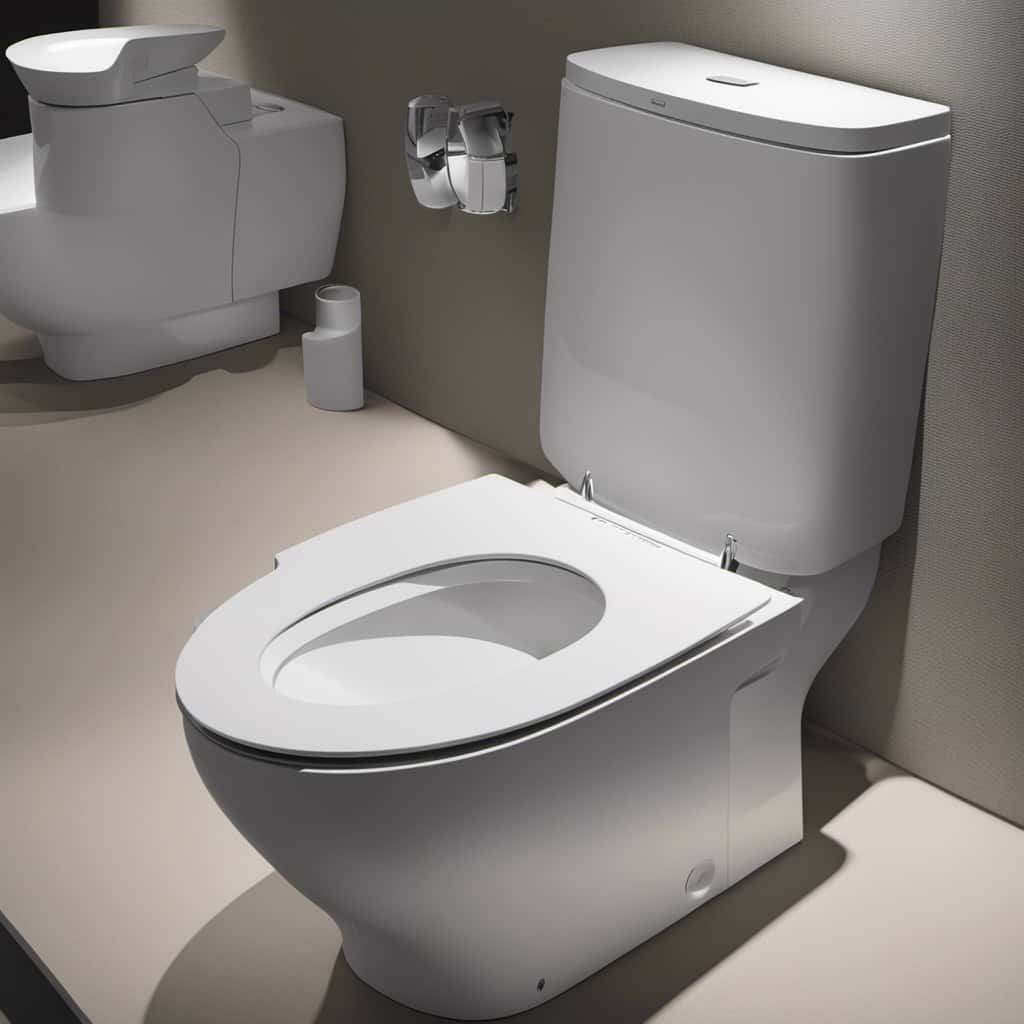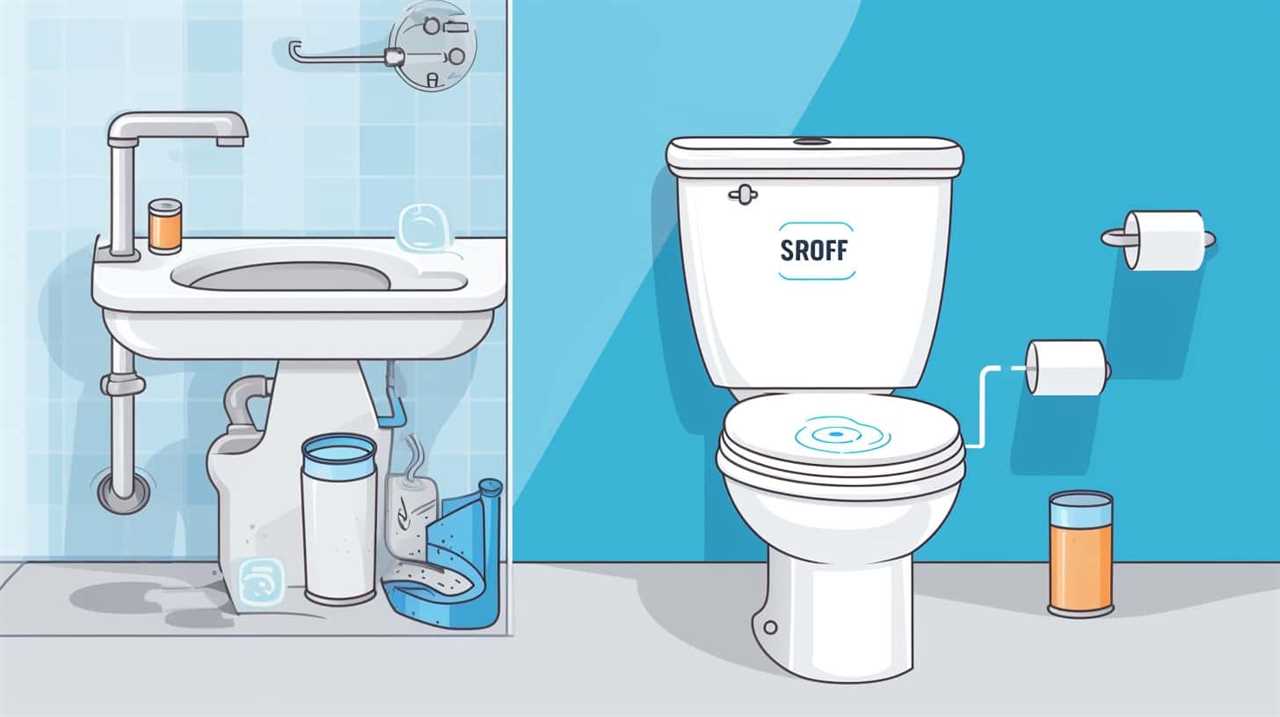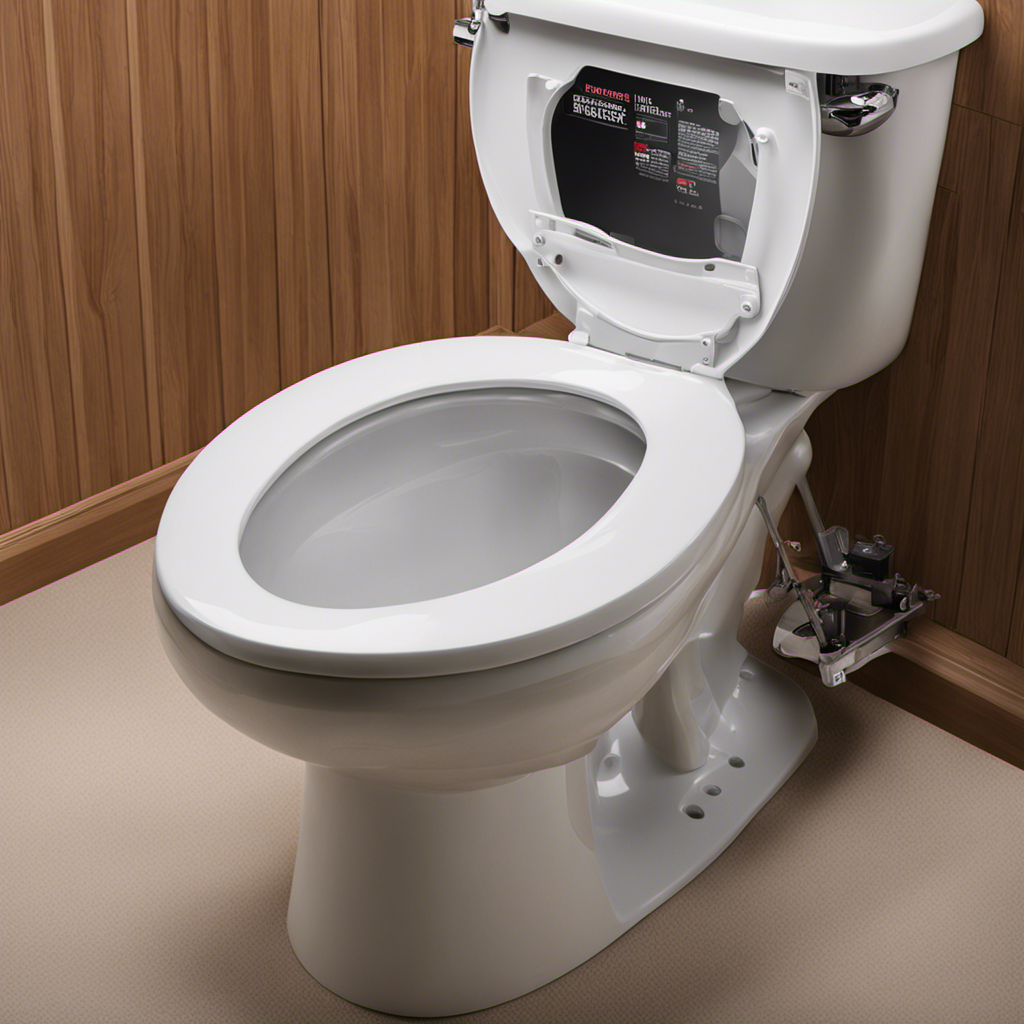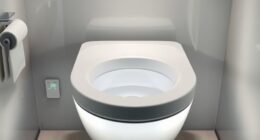Have you ever wondered how much water we use every time we flush a toilet?
Well, buckle up because we’re about to dive into the data. In this article, we’ll explore the average water usage per toilet flush, the factors that affect water consumption in toilets, and the benefits of high-efficiency toilets.
We’ll also compare water usage between older and newer toilet models and provide some tips for reducing water consumption in the bathroom.
Get ready to master the art of saving water!
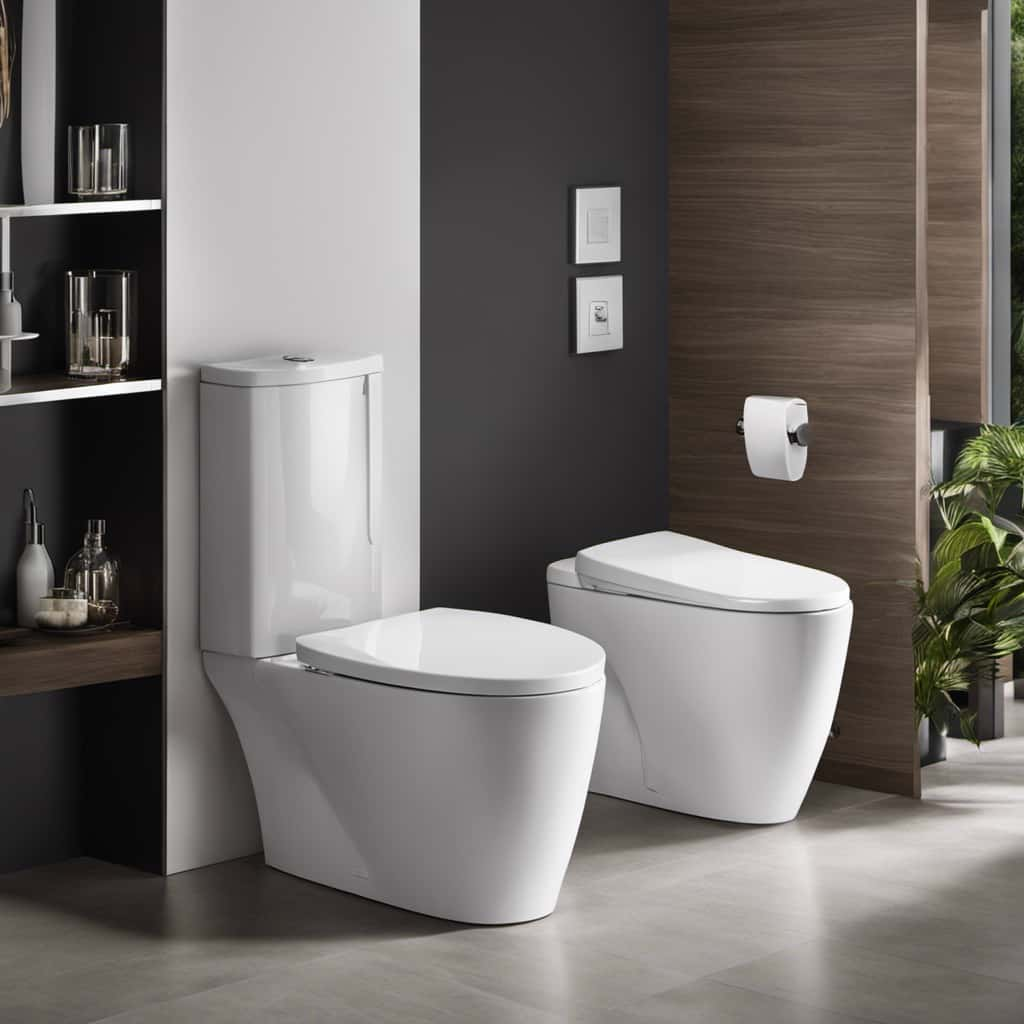
Key Takeaways
- On average, 1.6 gallons of water is used for each toilet flush.
- Water-saving toilets can reduce water usage to around 1.28 gallons or less per flush.
- Toilet design can greatly affect water consumption, with older toilets using more water per flush compared to newer models.
- Upgrading to a newer toilet model leads to substantial water savings, especially in households with multiple occupants.
Average Water Usage per Toilet Flush
On average, we use approximately 1.6 gallons of water for each toilet flush. This figure represents the toilet water consumption in a standard flush, which is based on traditional toilets.
However, with the introduction of water-saving toilets, this amount can be significantly reduced. Water-saving toilets, also known as low-flow toilets, have been designed to use less water per flush while still effectively removing waste. These toilets typically use around 1.28 gallons or even less, resulting in considerable water savings over time.
This reduction in toilet water consumption not only helps conserve water, but also reduces water bills and promotes sustainability. Understanding the average water usage per toilet flush is crucial in evaluating the efficiency of our plumbing systems and exploring ways to further reduce water consumption.
Now, let’s explore the various factors affecting water consumption in toilets.
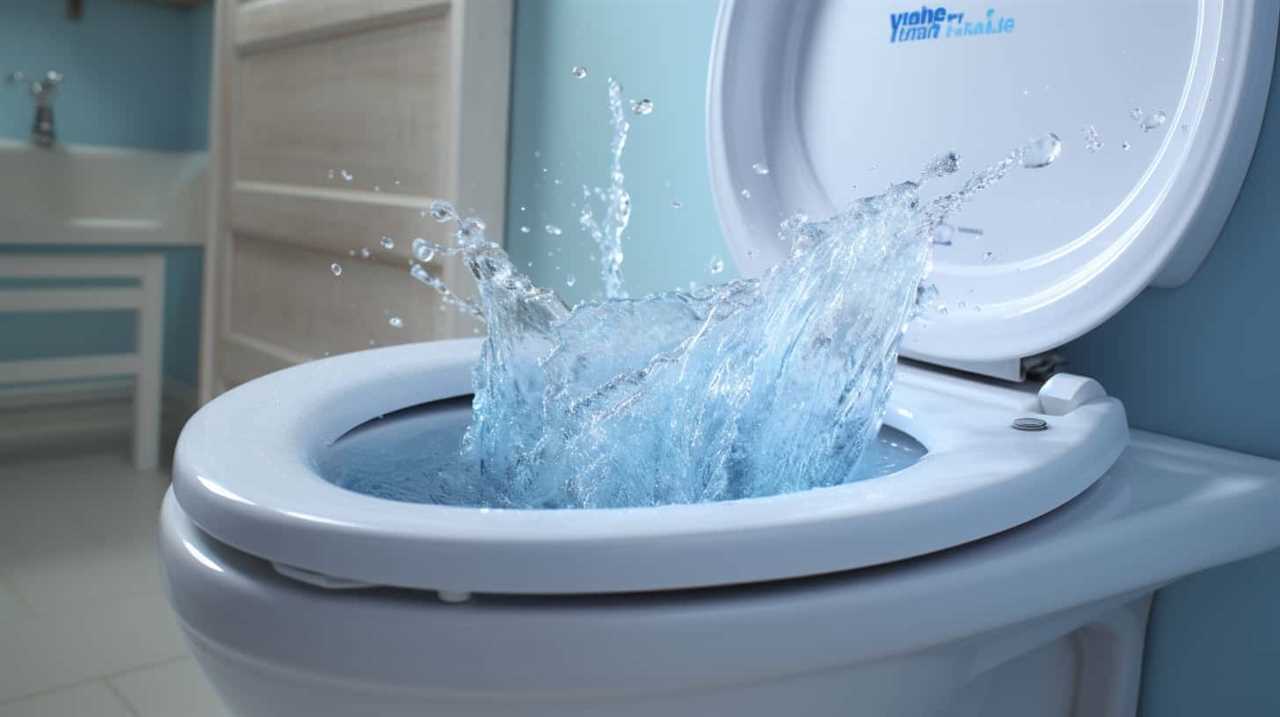
Factors Affecting Water Consumption in Toilets
There are several factors that impact the amount of water consumed in toilets. To understand how to save water, it’s important to consider these factors:
- Toilet design: The design of a toilet can greatly affect water consumption. Older toilets tend to use more water per flush compared to newer models. Modern toilets are equipped with water-saving technologies such as dual-flush systems or low-flow toilets, which significantly reduce water usage.
- Flush volume: The volume of water used per flush is another important factor. Standard toilets typically use around 1.6 gallons (6 liters) of water per flush, whereas high-efficiency toilets can use as little as 1.28 gallons (4.8 liters) per flush.
- Flush frequency: The number of times a toilet is flushed per day also affects overall water consumption. Homes with multiple occupants or high traffic areas may have a higher flush frequency, resulting in increased water usage.
- User behavior: How individuals use the toilet can impact water consumption. For example, flushing unnecessarily or using excessive toilet paper can lead to unnecessary water waste.
Understanding these factors can help individuals make informed decisions about their toilet choices and behaviors to conserve water.
Transitioning into the next section, let’s explore the benefits of high-efficiency toilets and their water-saving capabilities.
High-Efficiency Toilets and Their Water-Saving Benefits
Now let’s delve into the benefits of high-efficiency toilets and how they save water, building upon the factors discussed in the previous subtopic.

Water-efficient toilet designs have been developed to meet the increasing demand for sustainable solutions in the plumbing industry. These toilets utilize advanced technology to reduce water consumption without compromising on performance.
By incorporating features such as dual-flush mechanisms, pressure-assisted flushing, and improved bowl design, high-efficiency toilets can significantly decrease water usage per flush. As a result, households can save thousands of gallons of water each year, leading to reduced water bills and a positive environmental impact.
The implementation of water-saving regulations in many countries has also driven innovation in the toilet industry, encouraging manufacturers to develop more efficient and eco-friendly products.
Comparing Water Usage Between Older and Newer Toilet Models
We compared the water usage between older and newer toilet models. Here are four key findings:
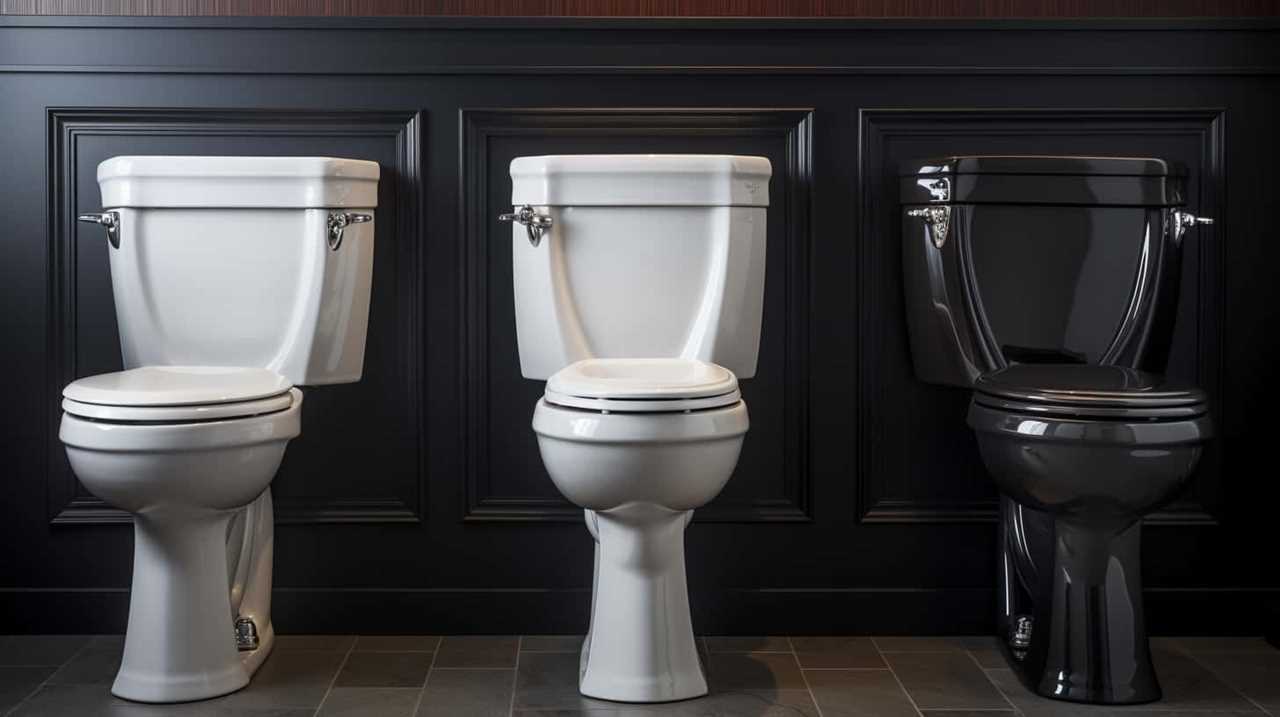
- Newer toilet models are more water efficient, using significantly less water per flush compared to older models.
- The average water usage for older toilets is around 3.5 to 7 gallons per flush, whereas newer models use only 1.28 to 1.6 gallons per flush.
This significant reduction in water usage contributes to water conservation efforts and helps to minimize water wastage.
- Upgrading to a newer toilet model can lead to substantial water savings, especially in households with multiple occupants.
By choosing a water-efficient toilet, individuals can make a positive impact on water conservation without compromising on functionality or performance.
Upgrading to newer toilet models not only reduces water consumption but also saves money on water bills. It’s a win-win situation for both the environment and your wallet.
Tips for Reducing Water Consumption in the Bathroom
To reduce water consumption in the bathroom, we can implement various strategies.
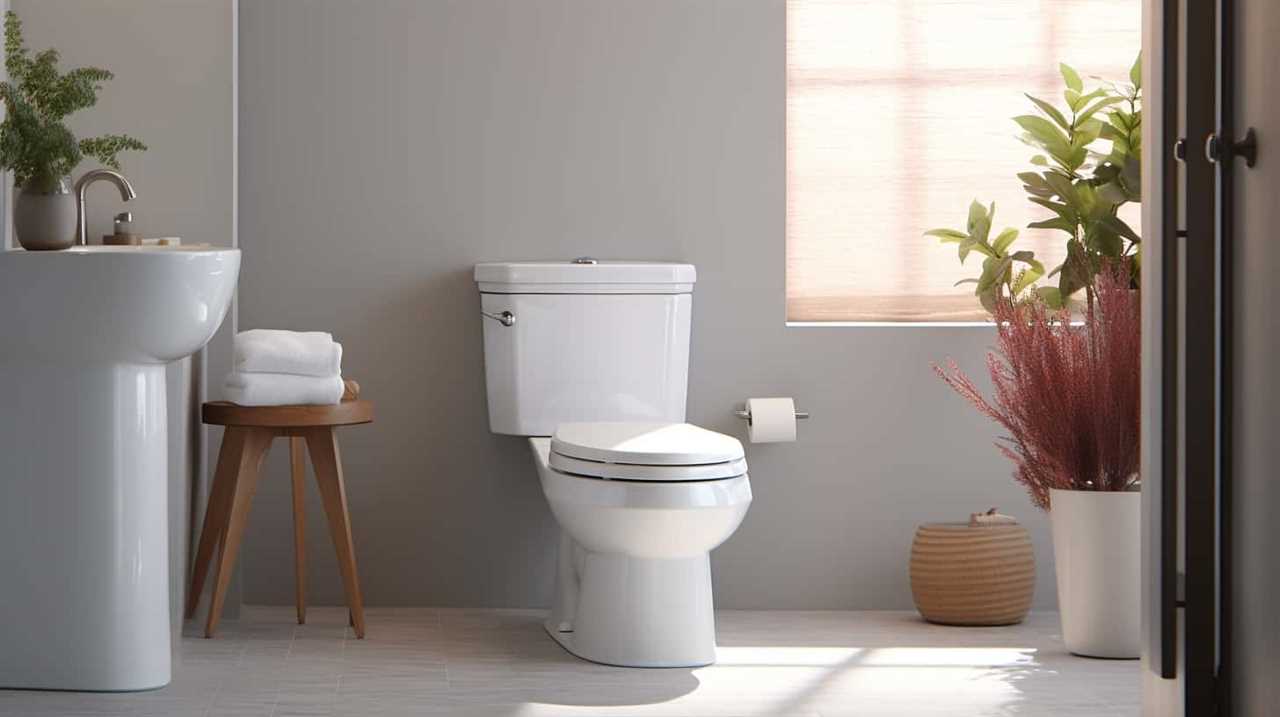
One effective way is to install water-saving showerheads. These showerheads are designed to reduce the amount of water used during a shower while still providing a satisfying water flow. By using water-saving showerheads, you can save up to 2.5 gallons of water per minute.
Another strategy is to replace traditional bathroom faucets with eco-friendly ones. These faucets are designed to minimize water wastage by incorporating features like aerators, which mix air with the water stream to reduce its flow rate. By using eco-friendly bathroom faucets, you can significantly reduce water consumption in your bathroom.
Implementing these strategies not only helps conserve water but also reduces your water bills and contributes to a more sustainable environment.
Frequently Asked Questions
What Is the Average Water Usage per Toilet Flush in the United States?
On average, toilet flushes in the United States use a certain amount of water. This water usage varies across countries and has an impact on water scarcity.
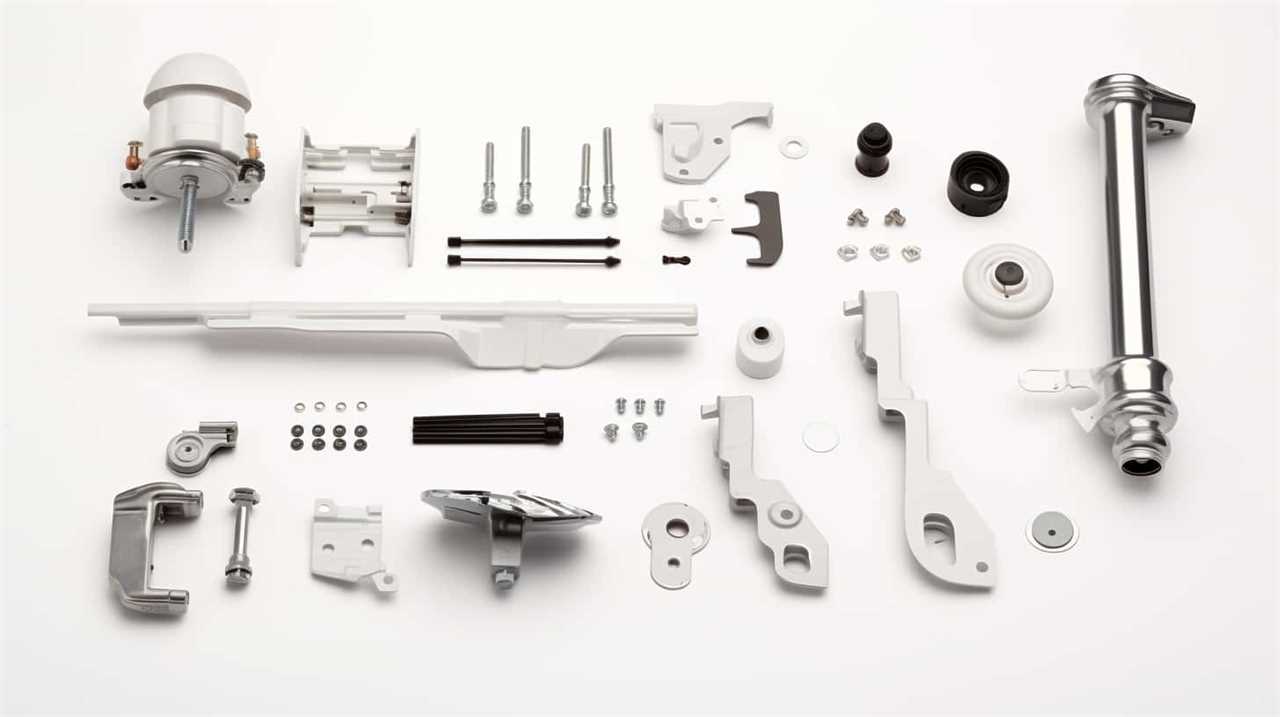
How Does the Size of the Toilet Tank Affect Water Consumption?
Toilet tank size directly affects water consumption. By optimizing the size, incorporating water-saving technology, and retrofitting old toilets, we can reduce water usage. Analyzing water consumption and adhering to water-saving regulations are essential for environmental impact and water conservation.
What Are Some Other Benefits of High-Efficiency Toilets Besides Water-Saving?
Benefits of high-efficiency toilets go beyond water-saving. They contribute to sustainability by reducing water consumption, lowering utility bills, and minimizing strain on water resources. Installing such toilets is a wise choice for a sustainable future.
How Much Water Do Older Toilet Models Typically Use per Flush Compared to Newer Ones?
Newer toilets use less water per flush compared to older models. Toilet water efficiency has improved over time, reducing toilet flush volume. This is beneficial for saving water and promoting sustainability in our daily lives.
Besides Reducing the Number of Toilet Flushes, What Other Tips Can Help in Reducing Water Consumption in the Bathroom?
Water saving showerheads and eco-friendly bathroom fixtures are great ways to reduce water consumption in the bathroom. They can help us conserve water without compromising our comfort and convenience.
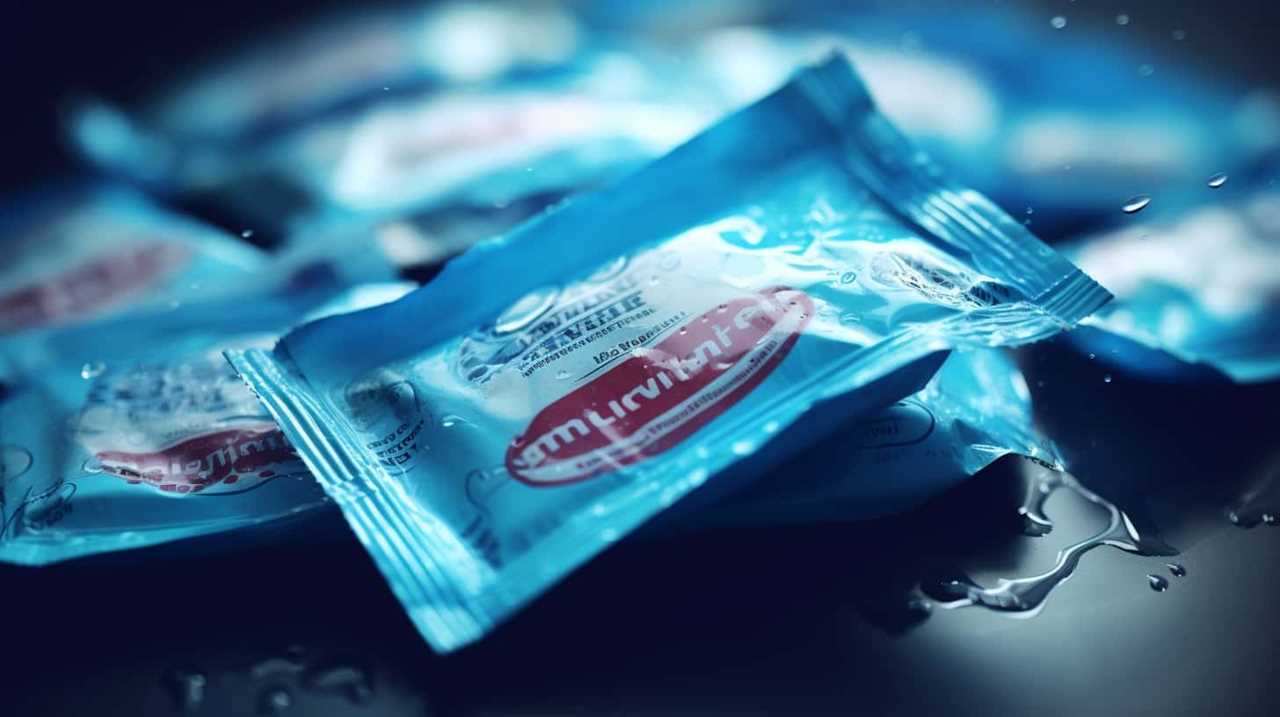
Conclusion
In conclusion, the average water usage for one flush of a toilet is approximately 1.6 gallons.
However, by incorporating high-efficiency toilets and adopting water-saving habits, such as fixing leaks and using dual-flush systems, substantial reductions in water consumption can be achieved.
By making these changes, we can help protect our environment and conserve our precious water resources, flowing towards a more sustainable future.
